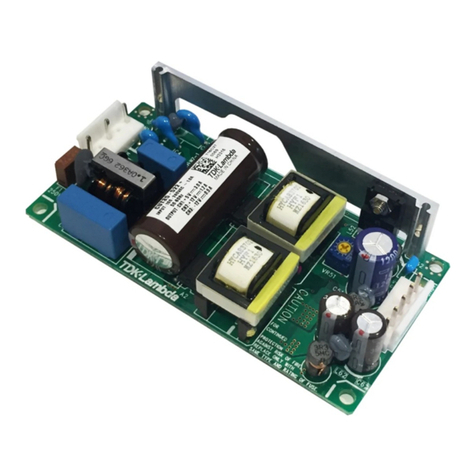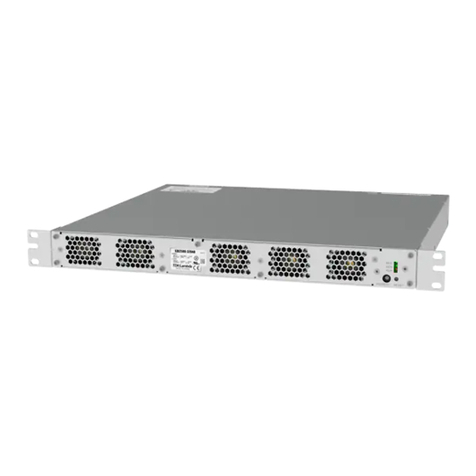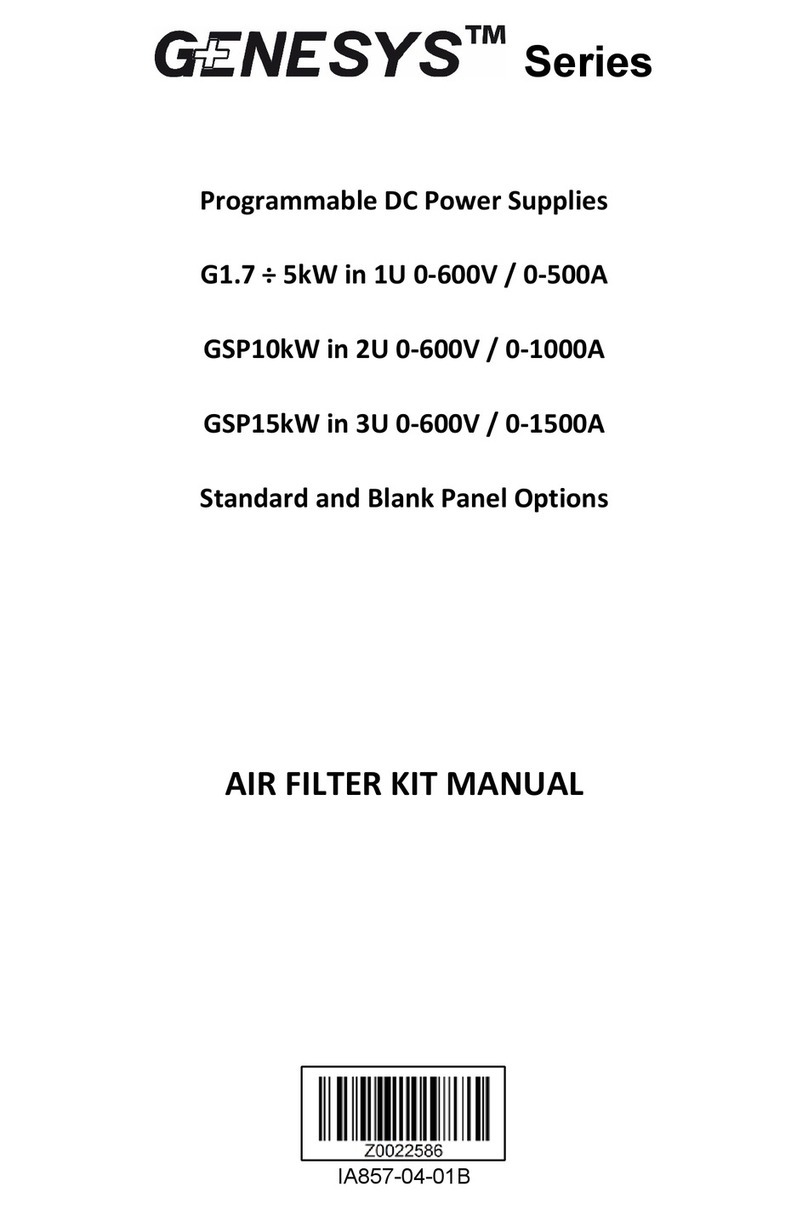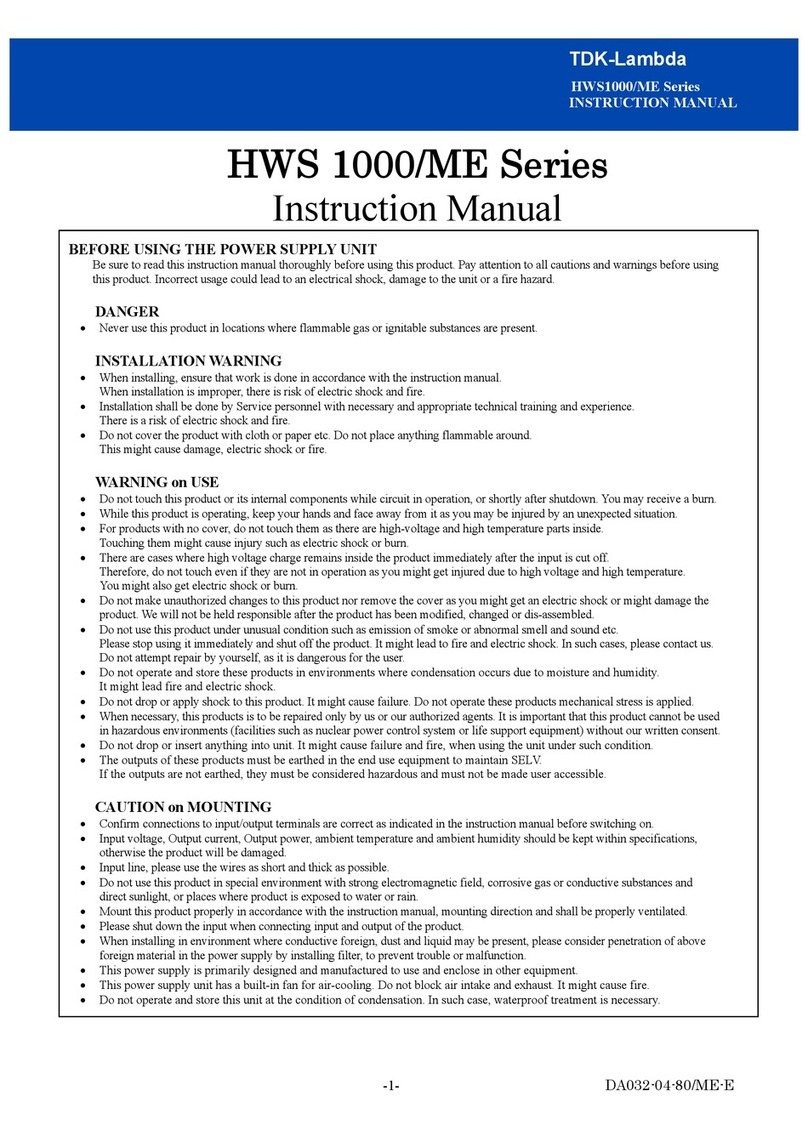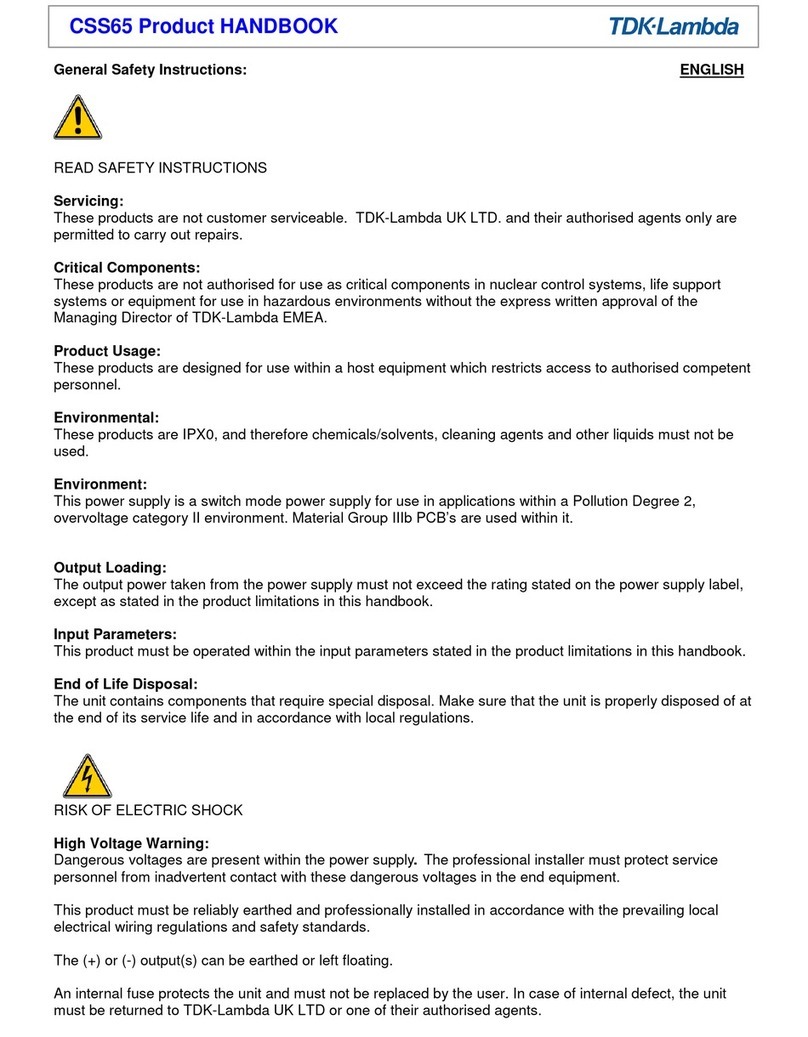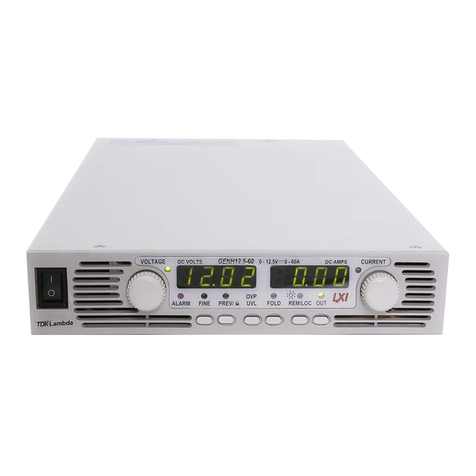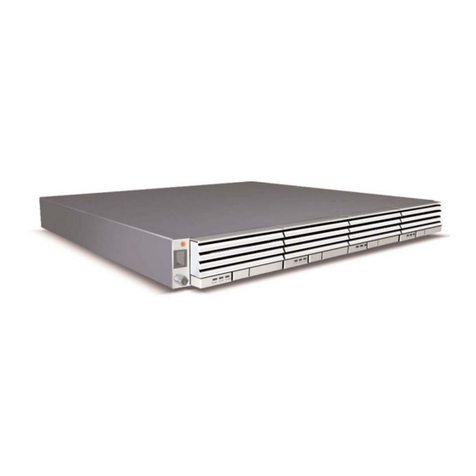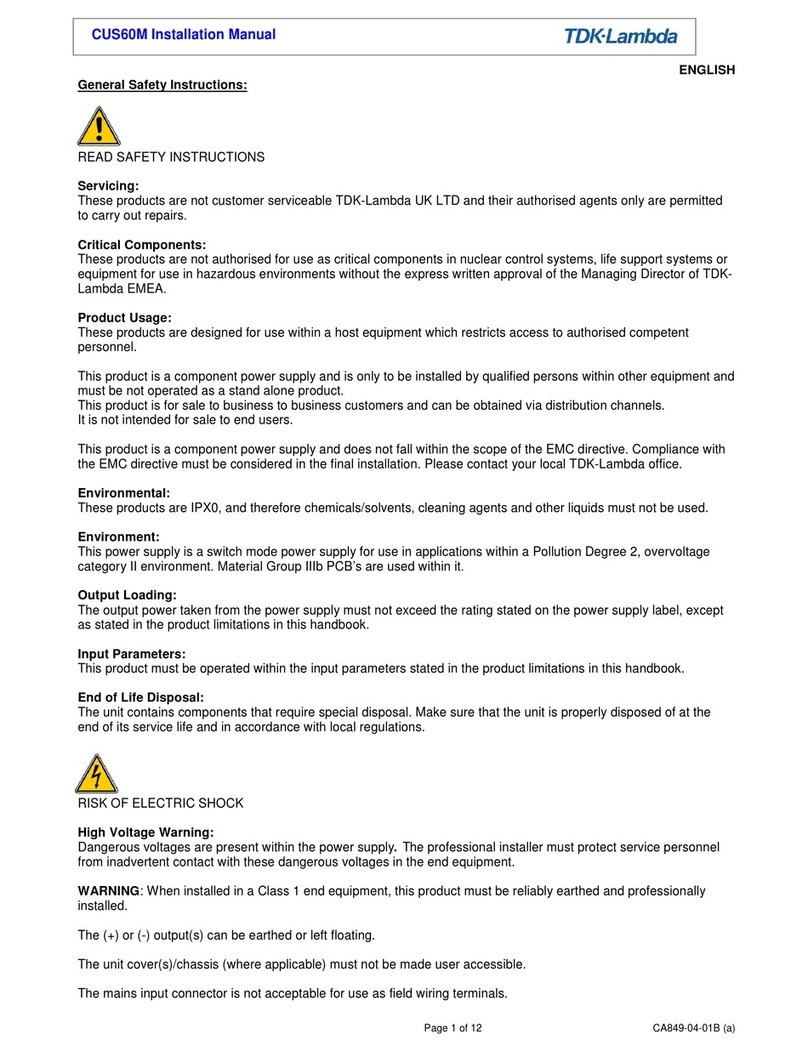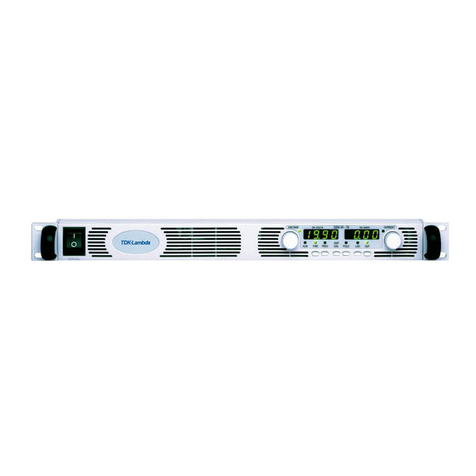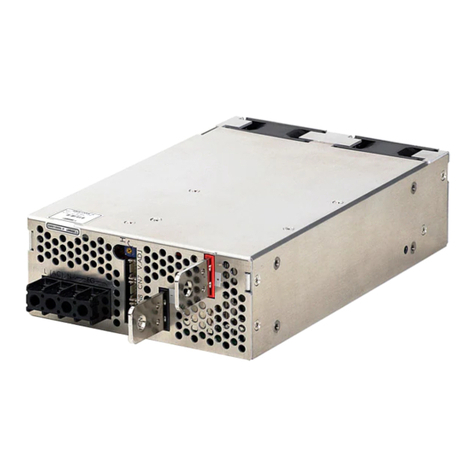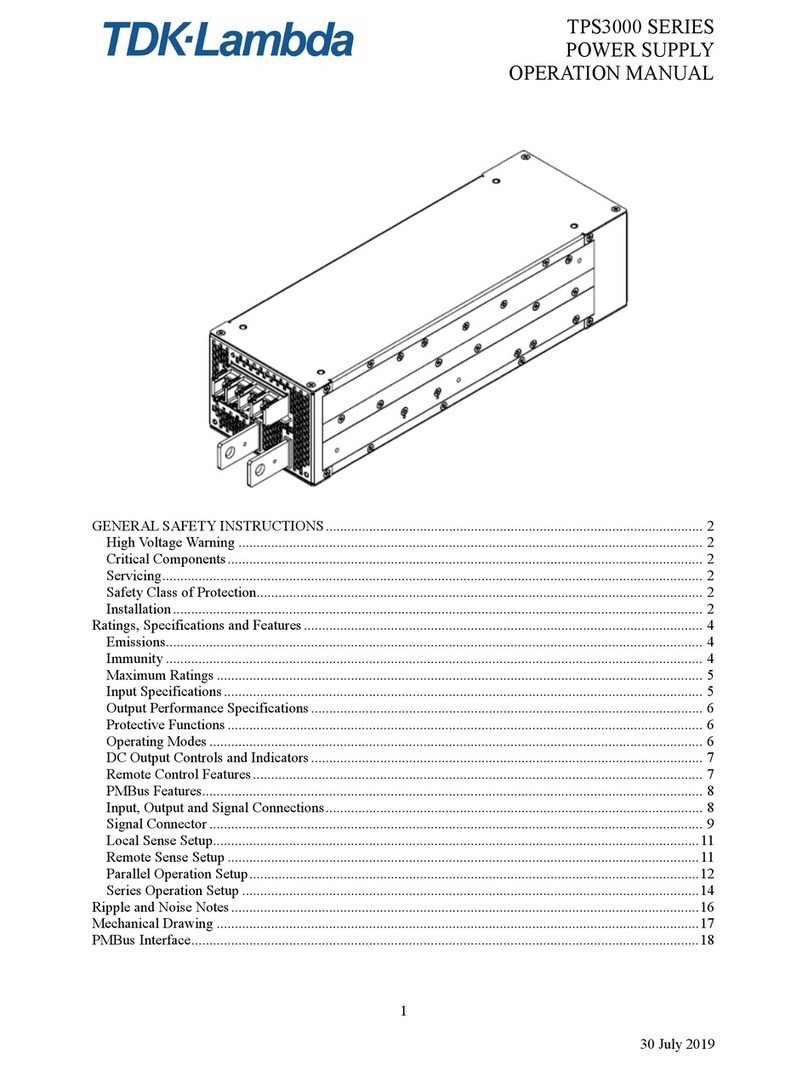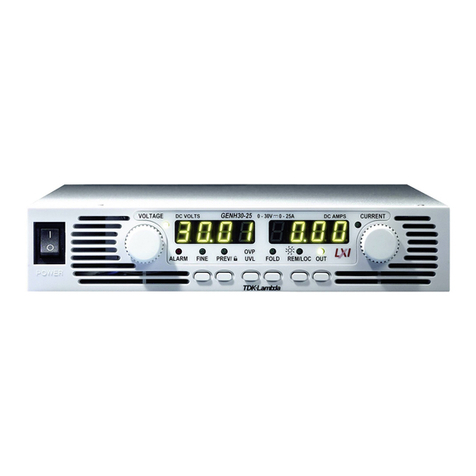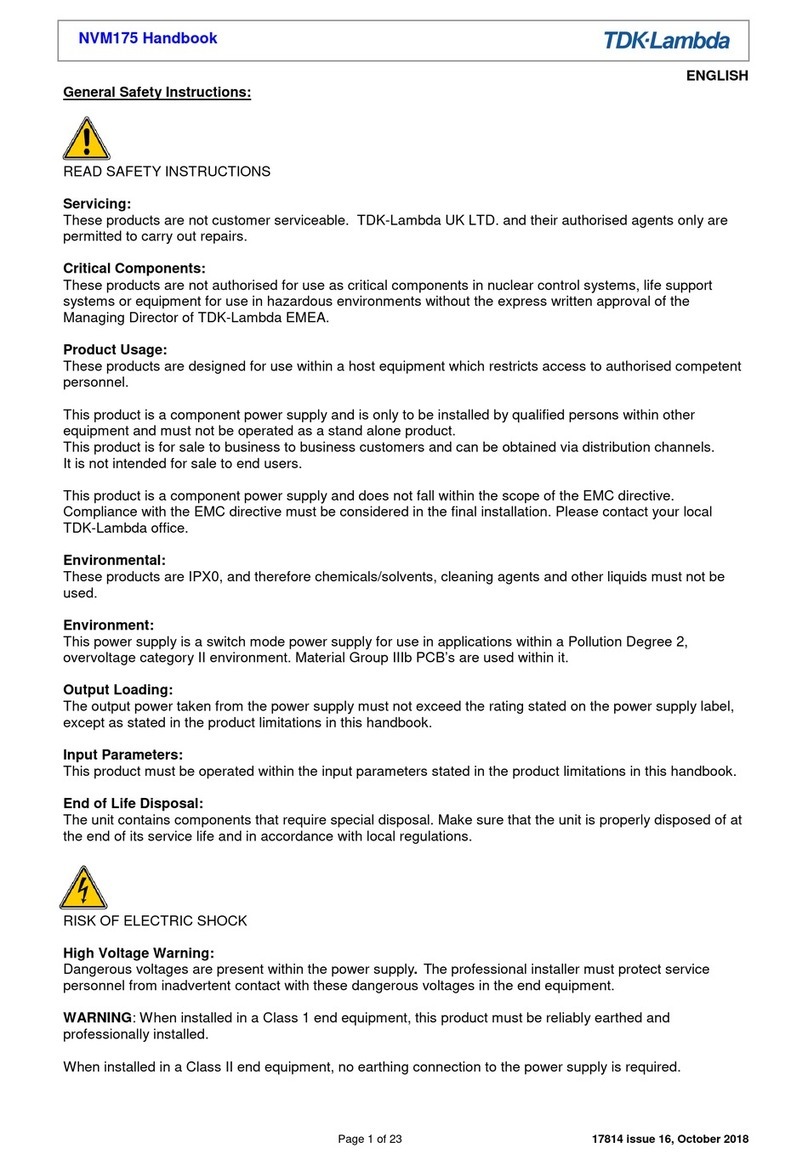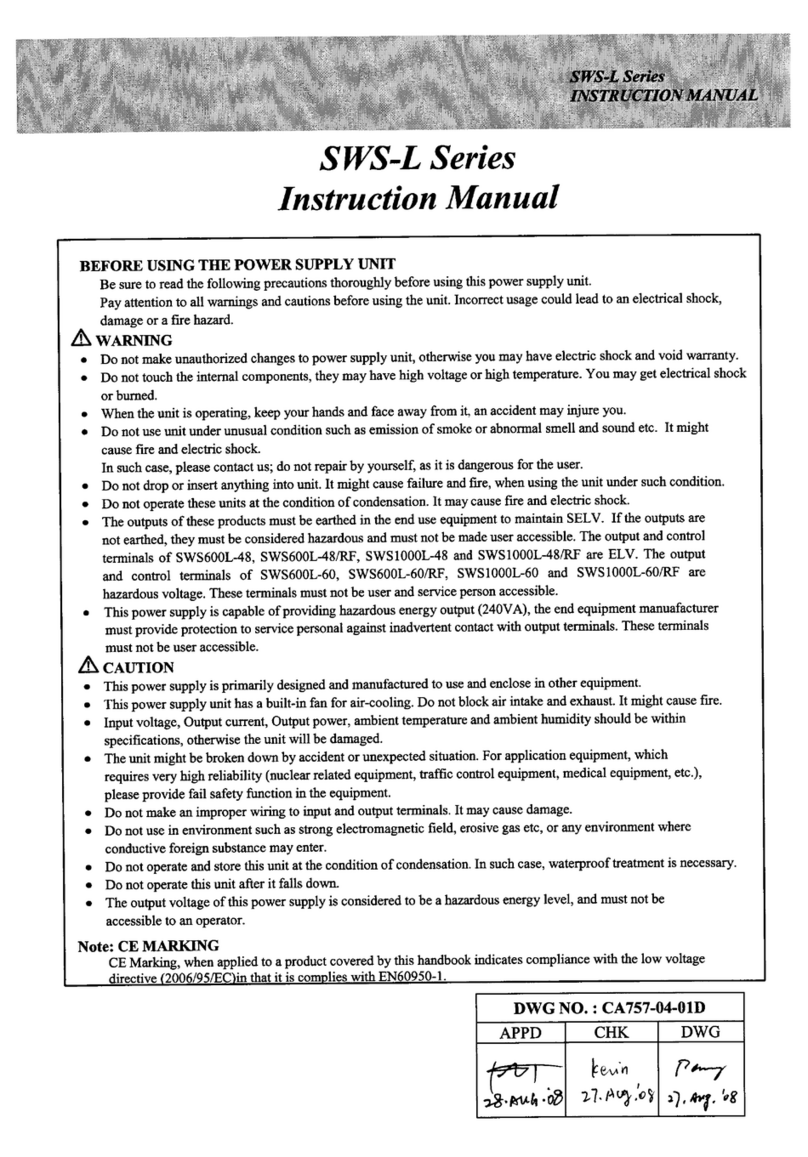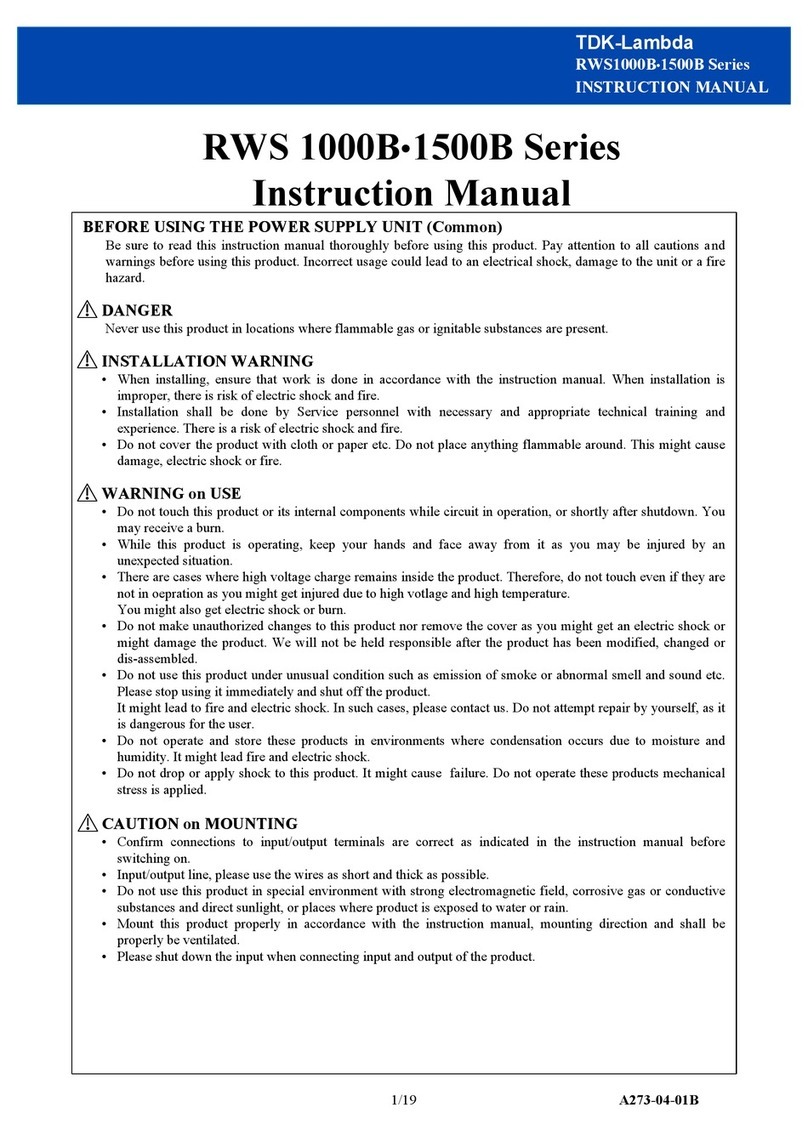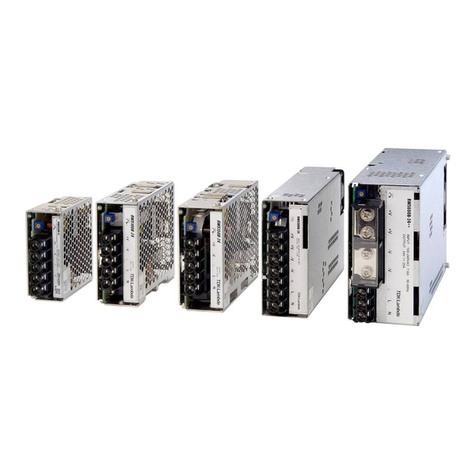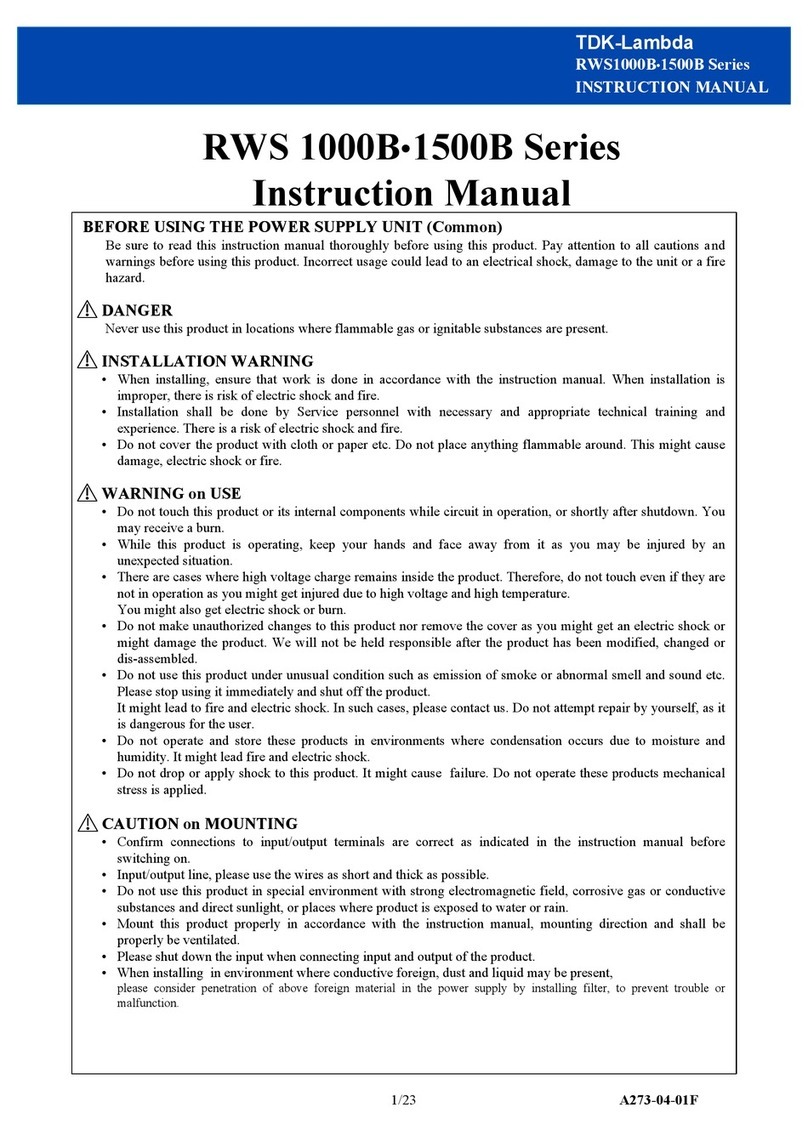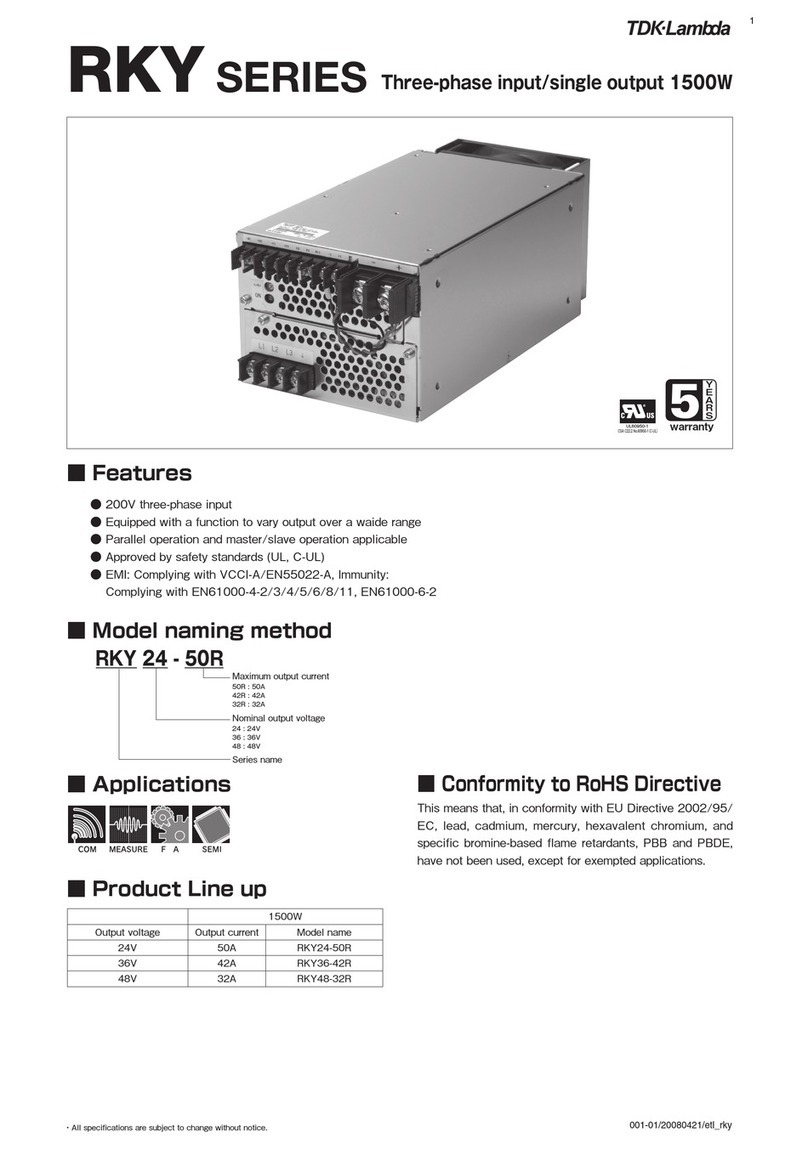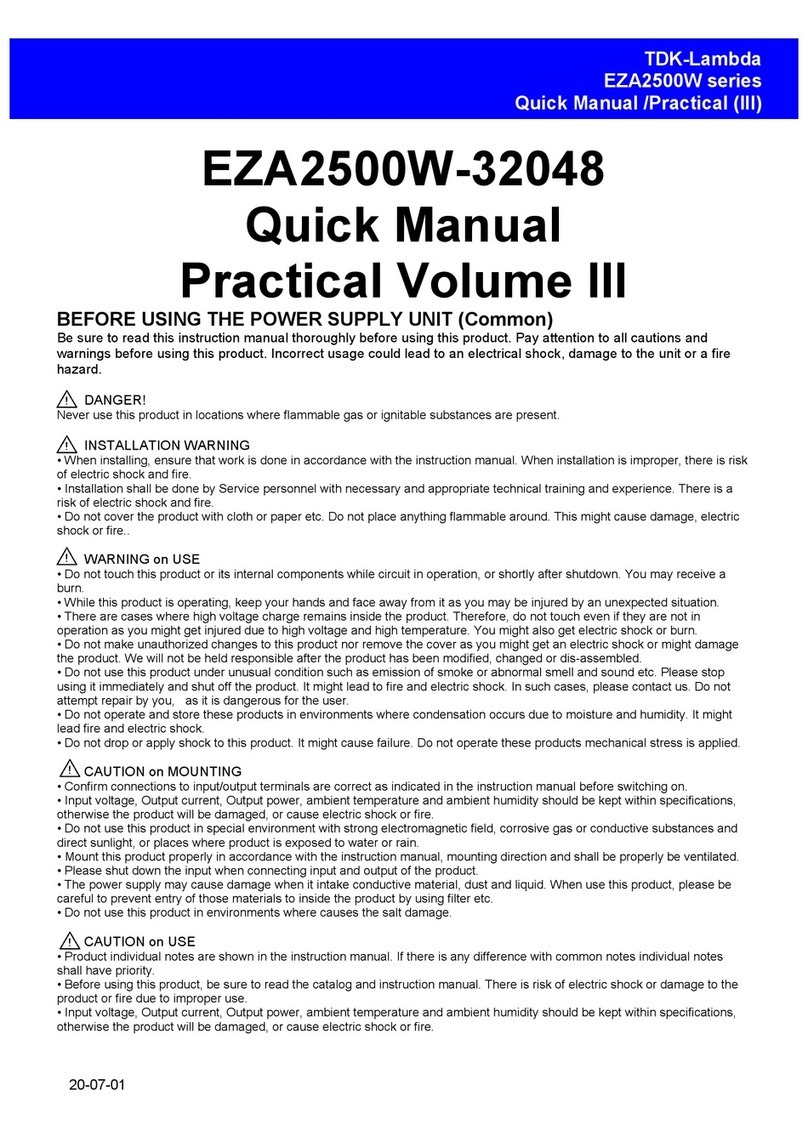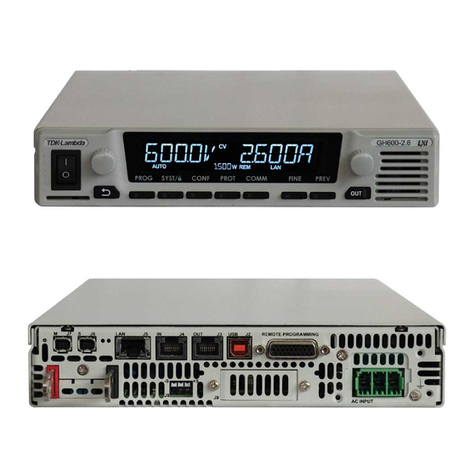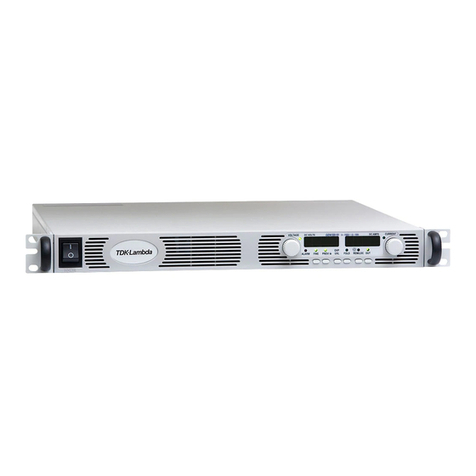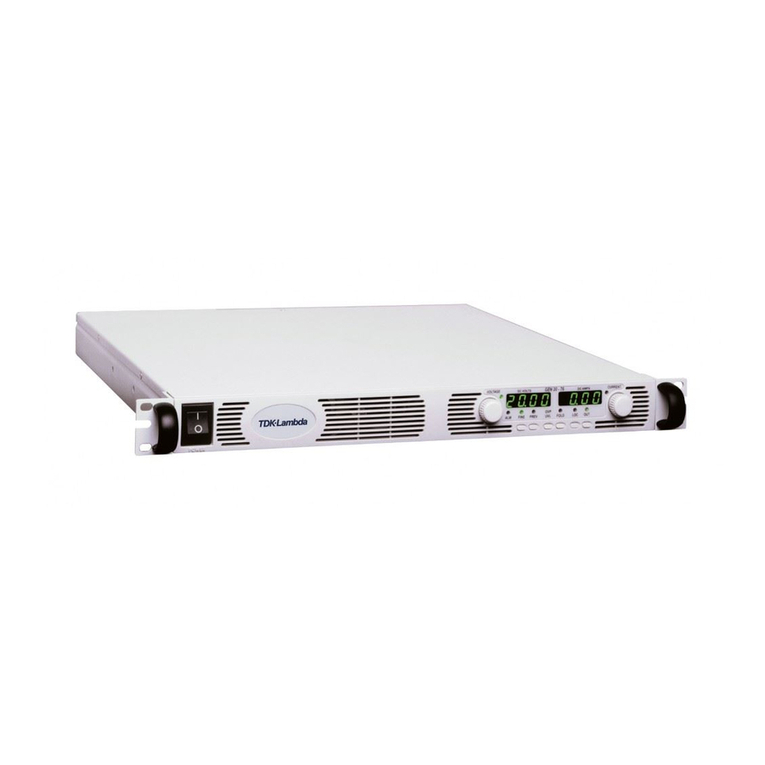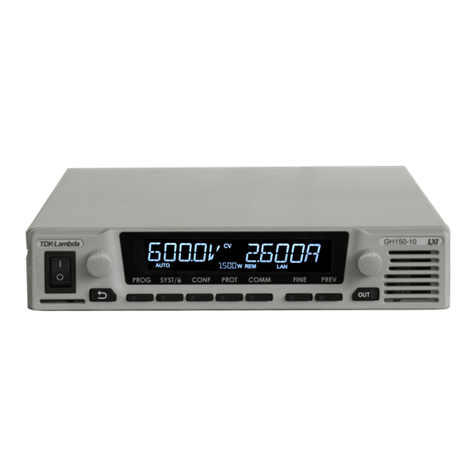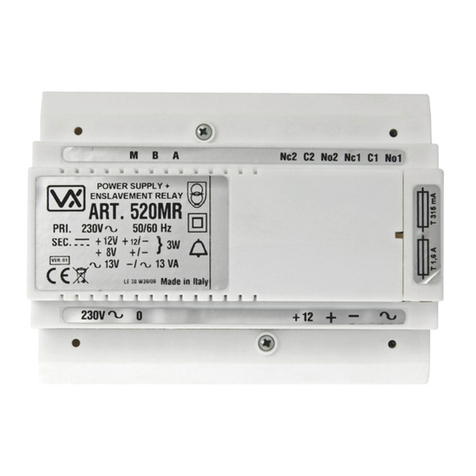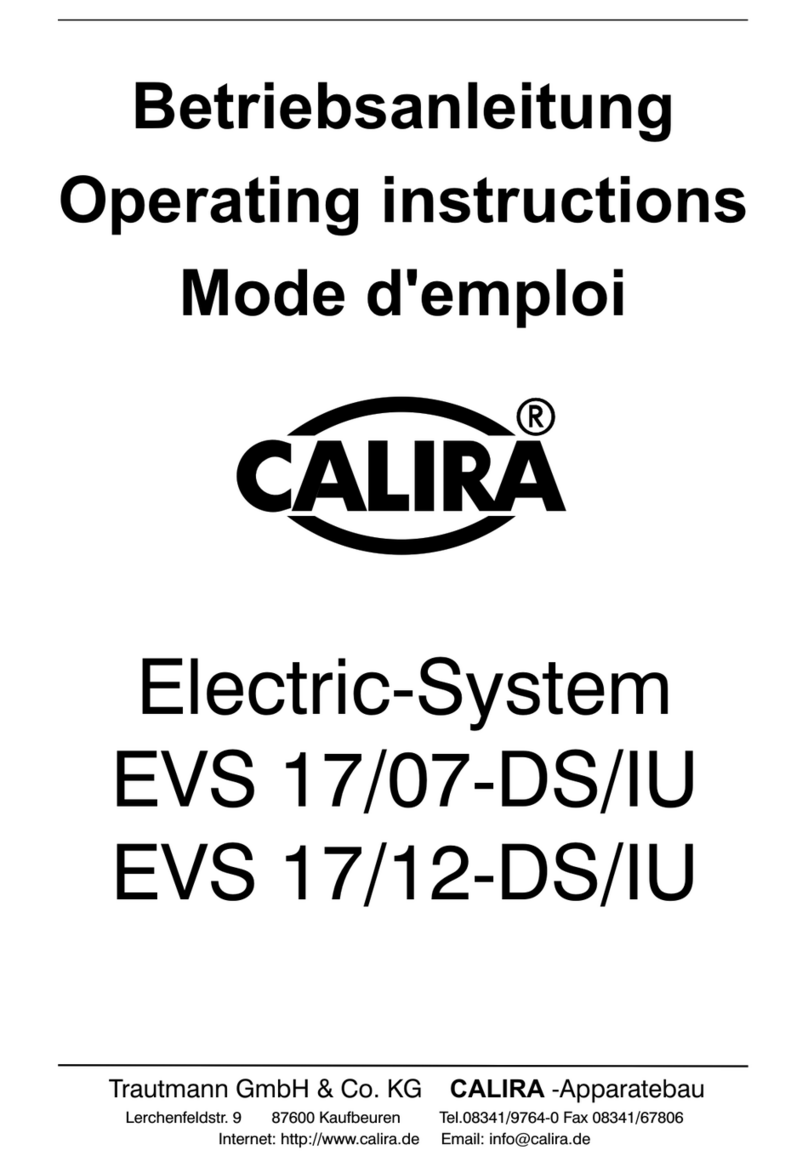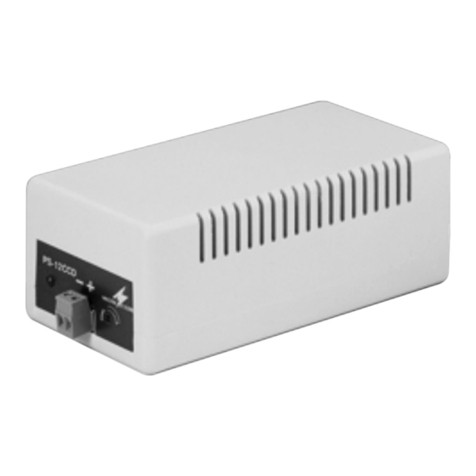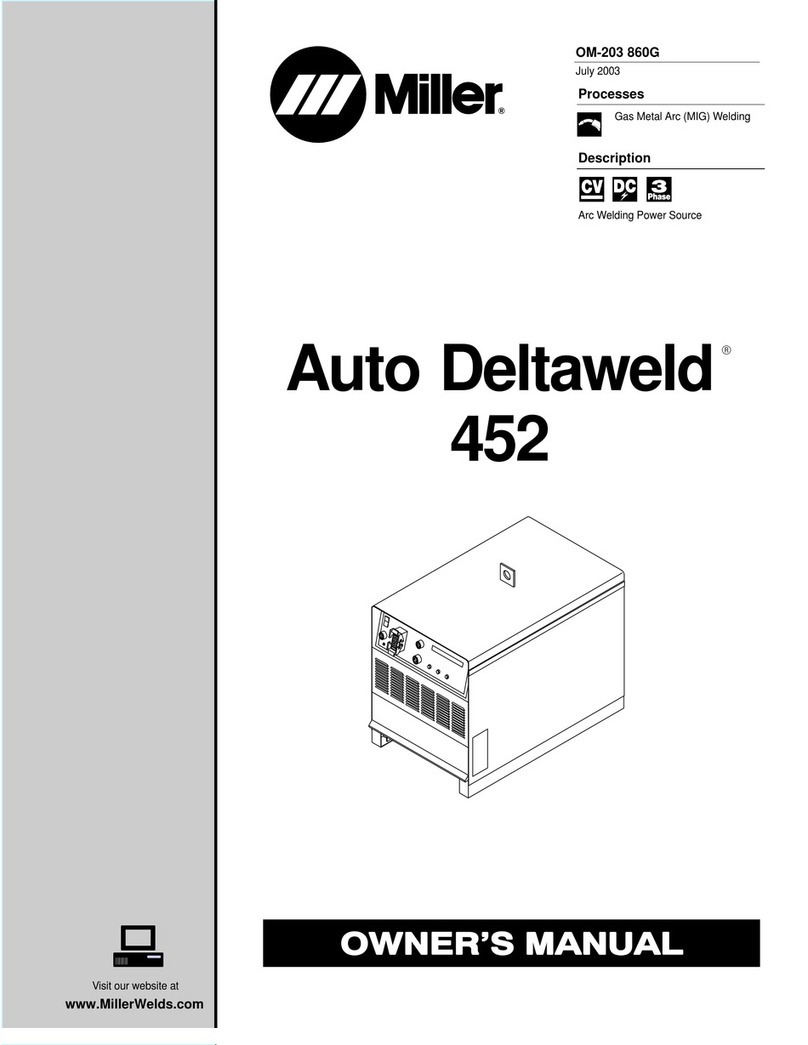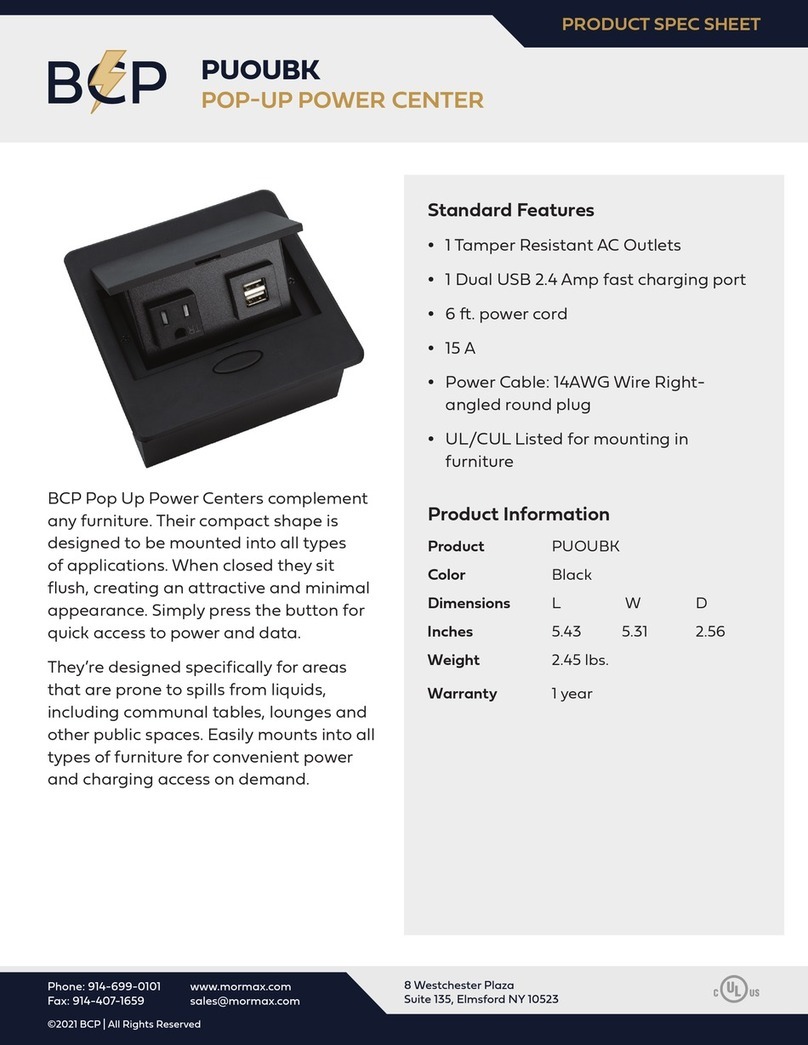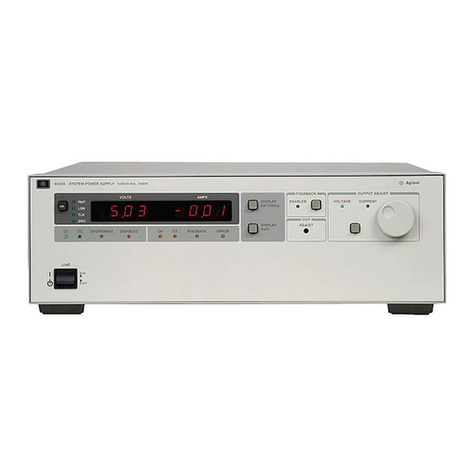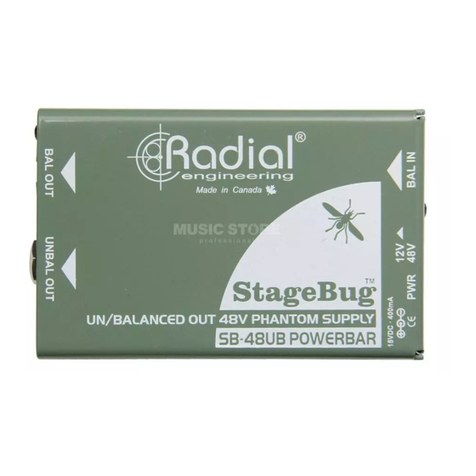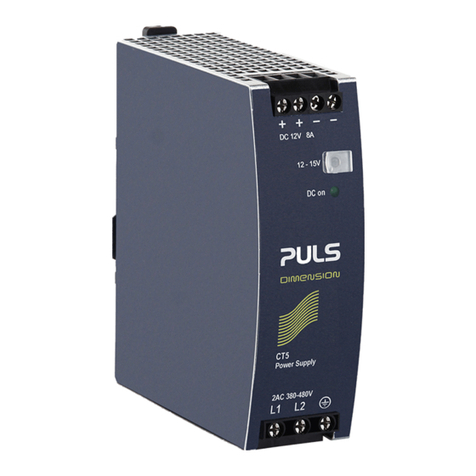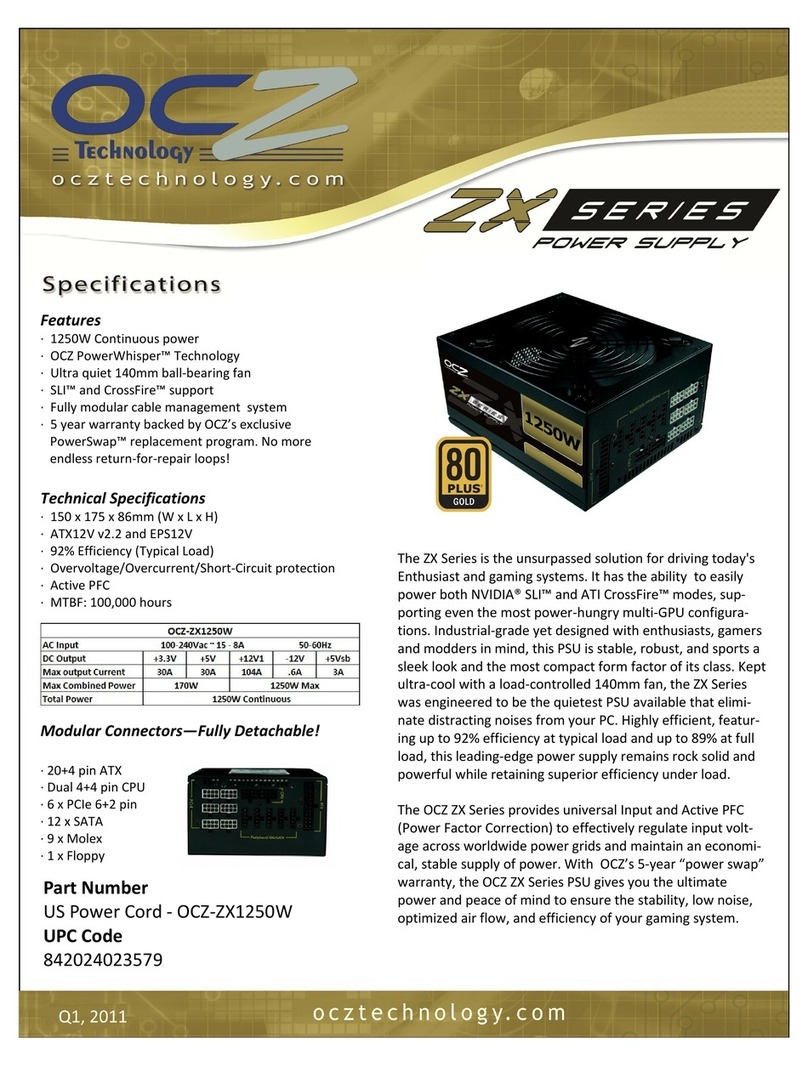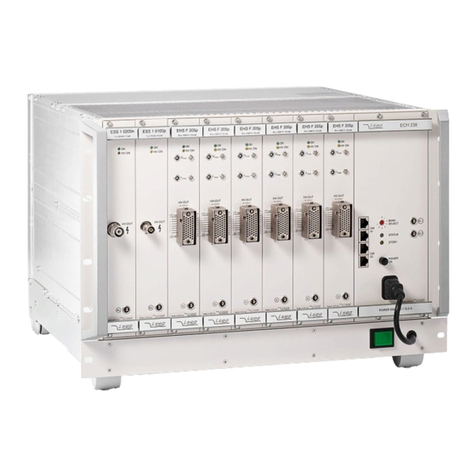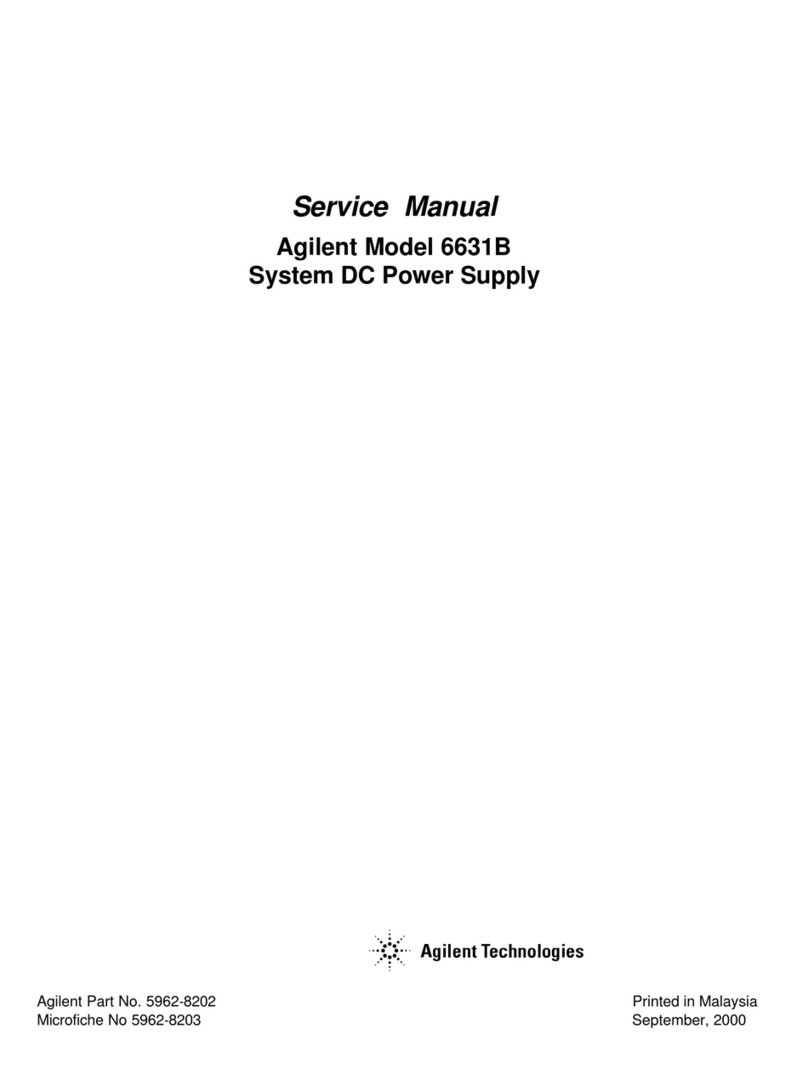
4
TDK-Lambda
GWS 250 Series
INSTRUCTION MANUAL
4. Explanation of Functions and Precautions
4-1. Input Voltage Range
Input voltage range is single phase 85 ~ 264VAC (47 ~ 63Hz) or 125 ~ 373VDC.
Input voltage which is out of specification, may damage the unit. For cases where conformance to various
safety specs(UL,CSA,EN) are required, input voltage range will be 100~240VAC (50/60Hz ).
Note : GWS250 series is able to withstand Input Surge of 300VAC for 5 seconds.
4-2. Output Voltage Range
V.ADJ trimmer is for output voltage adjustment within the range of specifications. Turning the trimmer clockwise will
increase the output voltage. Kindly note that over voltage protection ( OVP ) function may trigger if the output voltage
is increased excessively. Please ensure that the output power is below the rated output power, and output current is
below the maximum output current (12V & 48V) or below the peak output current (24V & 36V) when output voltage is
raised.
4-3. Over Voltage Protection (OVP)
The OVP function will shutdown the output. To reset OVP, remove the input of power supply for a few minutes, and
then re-input. Alternatively, use CNT reset (Remote ON/OFF: OFF to ON). OVP setting is fixed and cannot be adjusted
externally.
4-4. Over Current Protection (OCP)
OCP function operates when the output current exceeds OCP specifications. OCP characteristic is constant current
limiting for 24V ~ 48V while 12V has hiccup mode. The output will automatically recover when the overload condition
is removed. Do not operate overload or dead short conditions for more than 30 seconds, which could result in damage.
There is no possibility of fire or burning. OCP setting is fixed and not to be adjusted externally.
4-5. Over Temperature Protection (OTP)
Over Temperature Protection function (manual reset type) is available. When ambient or internal temperature rises
abnormally, OTP function will shut down the output. To recover the unit, first shut down the AC input and let the unit
cool down before turning ON the AC input. Alternatively, use CNT reset (Remote ON/OFF: OFF to ON) after letting
the unit cool down.
As for the /T option model, the unit automatically recovers after it cools down without the need for AC recycle or CNT
reset.
